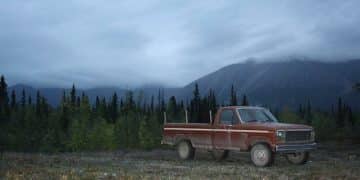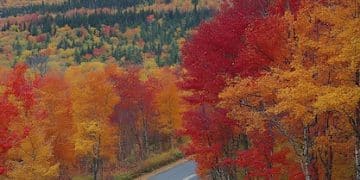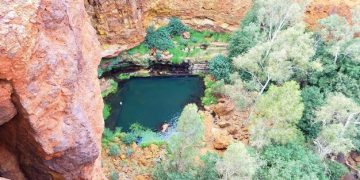Top 5 National Park Road Trips 2025: Maximize Your Vacation

Planning an unforgettable adventure in 2025? This essential guide unveils the top 5 national park road trip routes, meticulously designed to help travelers maximize their vacation days and experience America’s natural wonders through expertly curated itineraries, practical tips, and detailed highlights for each journey.
Embarking on a national park road trip is an quintessential American adventure, blending breathtaking scenery with unparalleled opportunities for exploration. For 2025, we’re diving deep into the most spectacular routes, meticulously crafted to ensure you make the absolute most of your precious vacation days. Whether you’re a seasoned wanderer or a first-time road tripper, Unveiling the Top 5 National Park Road Trip Routes for 2025: Maximize Your Vacation Days promises to inspire and guide your next unforgettable journey through America’s natural treasures.
The Grand Southwest Circuit: Arches, Canyonlands & Capitol Reef
The American Southwest is a mosaic of vibrant colors, towering rock formations, and ancient history, offering some of the most iconic national parks in the country. This circuit is designed for those who appreciate dramatic landscapes and the vastness of the desert, providing a deep dive into Utah’s “Mighty 5” and beyond. It’s a journey that connects the dots between geological wonders, presenting a continuous narrative of erosion, time, and natural artistry.
Starting this epic journey typically begins in Moab, Utah, serving as the gateway to two magnificent parks: Arches National Park and Canyonlands National Park. Both offer distinct experiences but share the common thread of awe-inspiring scale. Arches delights with its delicate geological formations, inviting visitors to marvel at natural stone arches and balanced rocks. Canyonlands, on the other hand, presents a rugged, expansive landscape, carved by the Colorado and Green Rivers, reminiscent of the Grand Canyon but with its own unique character.
Navigating Arches and Canyonlands
Within Arches, the Delicate Arch is a must-see, particularly at sunrise or sunset when its red hues burn brightest. Consider a hike to Landscape Arch, one of the world’s longest natural arches, for a sense of its immense scale. Adequate hydration is crucial here, as desert temperatures can be extreme, especially in summer. Ranger-led programs often provide invaluable insights into the park’s geology and ecology, enhancing the visitor experience.
- Delicate Arch: Iconic symbol of Utah, hike at dawn or dusk.
- Landscape Arch: One of the longest natural arches worldwide, an impressive sight.
- Balanced Rock: A unique geological formation easily accessible for viewing.
- Double Arch: Two massive arches connected, offering photo opportunities.
Canyonlands National Park, divided into four districts, offers diverse experiences. The Island in the Sky district is the most accessible, providing panoramic vistas from mesa tops. Mesa Arch, famous for its sunrise views, literally glows as the sun peeks over the horizon, illuminating the arch’s underside. For the more adventurous, the Needles district challenges with backcountry hikes and four-wheel-drive trails, offering a raw, untamed desert experience.
Exploring Capitol Reef’s Hidden Gems
Moving southwest, the route leads to Capitol Reef National Park, often considered the unsung hero among Utah’s national parks. Less crowded than its famous neighbors, Capitol Reef offers a serene beauty characterized by its Waterpocket Fold, a 100-mile-long wrinkle in the earth’s crust. This geological monocline exposes a rainbow of rock layers, telling a story millions of years in the making. The park’s historic Fruita Orchards allow visitors to pick fresh fruit in season, a delightful contrast to the surrounding desert.
Beyond the geological wonders, Capitol Reef’s serene atmosphere provides a welcome respite. Scenic drives like the Capitol Reef Scenic Drive offer breathtaking views without the need for strenuous hiking. For those who enjoy a moderate walk, the Hickman Bridge Trail provides a rewarding experience, leading to a natural bridge and offering expansive views of the Waterpocket Fold. The park also hosts ancient petroglyph panels, preserving the stories of its earliest inhabitants.
This Grand Southwest Circuit is more than just a series of destinations; it’s an immersion into the natural forces that have shaped this incredible region. By linking these parks, travelers gain a comprehensive appreciation for the diversity and grandeur of the American West, creating memories that last a lifetime.
Pacific Northwest Wonders: Olympic, Mount Rainier & North Cascades
The Pacific Northwest offers a dramatic contrast to the arid Southwest, presenting a lush tableau of ancient forests, snow-capped volcanoes, and rugged coastlines. This road trip route through Washington State is a journey into diverse ecosystems, from temperate rainforests to alpine meadows, providing a refreshing escape for nature lovers. It’s an itinerary rich in natural beauty, showcasing the unique ecological tapestry of the region.
Beginning this route in Seattle provides an excellent launchpad, with easy access to the Olympic Peninsula. Olympic National Park is a marvel of biodiversity, encompassing three distinct ecosystems: glaciated mountains, temperate rainforests, and a wild Pacific coastline. Each offers a unique set of experiences, making it a microcosm of the Pacific Northwest’s natural grandeur.
Olympic’s Rainforests and Coastlines
The Hoh Rainforest, within Olympic National Park, is a spiritual experience. Towering trees draped in moss, ferns carpeting the forest floor, and the muted light create an ethereal atmosphere. Hiking trails like the Hall of Mosses provide easy access to this ancient ecosystem. Hurricane Ridge, on the other hand, offers stunning panoramic views of the Olympic Mountains and the Strait of Juan de Fuca, accessible by a scenic drive.
- Hoh Rainforest: Immerse yourself in the lush, green temperate rainforest.
- Ruby Beach: Explore the iconic sea stacks and driftwood-strewn shores.
- Hurricane Ridge: Enjoy panoramic mountain views and alpine meadows.
- Lake Crescent: Serene glacial lake perfect for kayaking or leisurely walks.
The park’s coastline, particularly areas like Ruby Beach and Rialto Beach, reveal dramatic sea stacks and driftwood-strewn sands, offering incredible opportunities for photography and tidepooling. The sheer scale and raw beauty of the Pacific Ocean here are a powerful reminder of nature’s formidable power. Exploring tide pools during low tide offers a glimpse into the vibrant marine life thriving in this unique environment.
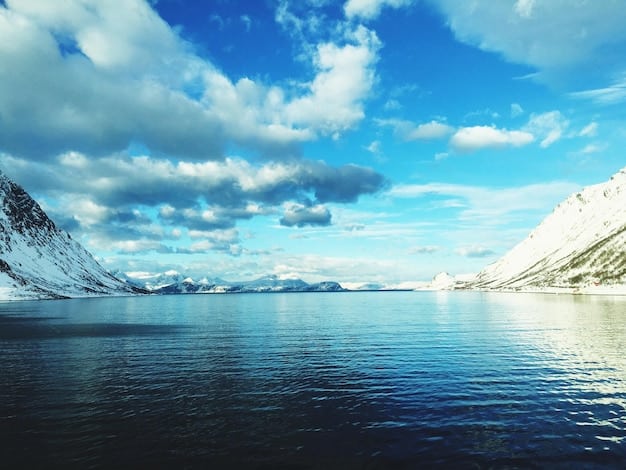
The Majestic Presence of Mount Rainier
From Olympic, the journey transitions inland to Mount Rainier National Park, dominated by the iconic 14,411-foot stratovolcano. Mount Rainier is an active volcano, a glacier-clad peak that defines much of the region’s skyline. The park offers an array of activities, from wildflower viewing in Paradise (aptly named) during summer to challenging mountaineering treks.
Paradise is particularly renowned for its subalpine meadows, which burst into a riot of color with wildflowers in mid-summer, set against the backdrop of the towering peak. Reflection Lake, a short loop hike, offers postcard-perfect views of Mount Rainier mirrored in its waters. For a more challenging hike, consider the Skyline Trail, which provides diverse scenery and breathtaking vistas. The park roads, like the Stevens Canyon Road, offer stunning viewpoints and access to various trailheads.
Untamed Wilderness of North Cascades
The final jewel in this circuit is North Cascades National Park, often called the “American Alps” due to its rugged, glaciated peaks. This park is one of the least visited national parks in the contiguous U.S., offering an untamed wilderness experience that rewards intrepid explorers. The North Cascades Highway (SR 20) provides scenic viewpoints and access to trailheads.
Diablo Lake, with its striking turquoise color caused by glacial silt, is a highlight, offering opportunities for kayaking and photography. Ross Lake, accessible via a boat shuttle or long hike, provides a deeper wilderness experience. The park is a haven for hikers and backpackers, with countless trails leading to alpine lakes, ancient forests, and sweeping vistas. This route is a true testament to the diverse and spectacular natural beauty of the Pacific Northwest.
The Yellowstone-Grand Teton Loop: Geysers and Grandeur
For many, a national park road trip evokes images of vast wilderness, iconic wildlife, and geological marvels. The Yellowstone and Grand Teton loop delivers on all fronts, offering an unparalleled experience in two of America’s most celebrated national parks. This itinerary is built around the dramatic landscapes of Wyoming and Montana, promising close encounters with nature and indelible memories.
Yellowstone National Park, America’s first national park, is a geothermal wonderland unlike any other. Its fame rests on its geysers, hot springs, and mud pots, but the park also boasts incredible wildlife, including bison, elk, wolves, and bears. The vastness of the park means that a comprehensive visit requires careful planning and several days to truly appreciate its diverse offerings.
Yellowstone’s Geothermal Wonders
Old Faithful, the world’s most famous geyser, erupts with remarkable predictability, a mesmerizing display of nature’s power. However, it’s just one piece of Yellowstone’s geothermal puzzle. The Grand Prismatic Spring, with its vibrant, multicolored bacterial mats, is a breathtaking spectacle. The Norris Geyser Basin, one of the hottest and most dynamic areas, presents a constantly changing landscape of steam vents and acidic springs. Midway Geyser Basin and Artists Paintpots also offer unique geothermal features, each with its own distinct charm.
- Old Faithful Geyser: Witness its iconic eruptions. Check predictions for timing.
- Grand Prismatic Spring: Marvel at its vibrant colors formed by thermophilic bacteria.
- Mammoth Hot Springs: Unique travertine terraces shaped by mineral-rich waters.
- Yellowstone Lake: Explore the largest high-altitude lake in North America.
Beyond the thermal features, Yellowstone’s Grand Canyon of the Yellowstone is a sight to behold, with its dramatic waterfalls and colorful canyon walls. Hayden Valley and Lamar Valley are premier wildlife viewing areas, especially at dawn and dusk. Driving through these valleys offers excellent opportunities to spot bison herds, elk, and possibly even wolves or bears in their natural habitats. Always maintain a safe distance from wildlife, using binoculars for close-up views.
Grand Teton’s Majestic Peaks
A short drive south from Yellowstone, Grand Teton National Park emerges with a dramatic transformation in scenery. Here, the Teton Range rises abruptly from the flat sagebrush plains, creating an iconic, jagged skyline. This park offers a different kind of grandeur than Yellowstone, focusing more on pristine alpine lakes, dense forests, and the dramatic interplay of mountains and water.
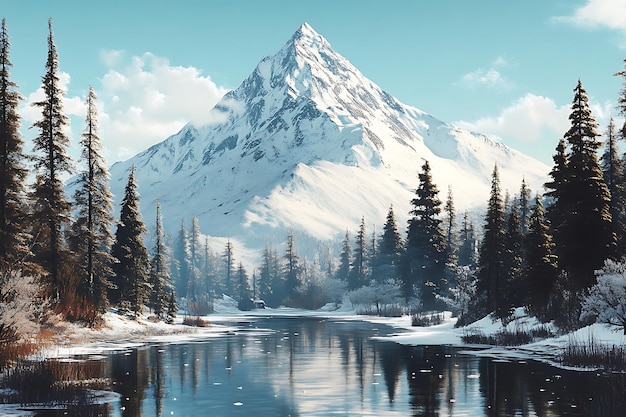
Iconic viewpoints like Oxbow Bend, Mormon Row, and Schwabacher Landing offer unparalleled photographic opportunities, especially at sunrise when the peaks glow with alpenglow. Jenny Lake and Leigh Lake provide opportunities for kayaking, canoeing, and scenic boat tours. Hiking trails abound, from easy strolls around the lakes to challenging ascents into the high Tetons. The park loop road offers numerous pull-offs and interpretive signs, providing context and stunning vistas.
Observing wildlife is also a major draw in Grand Teton, with elk, moose, and even bears frequently spotted. The park’s commitment to conservation ensures a relatively untouched wilderness experience, where visitors can truly connect with nature. This combined loop of Yellowstone and Grand Teton offers a comprehensive exploration of two of America’s most treasured natural landscapes, providing a journey of discovery and wonder.
The Rocky Mountain High Route: Estes Park to Aspen
The Rocky Mountains represent the rugged heart of America, a region of majestic peaks, crystalline alpine lakes, and abundant wildlife. This road trip route, stretching from the eastern foothills of Estes Park to the chic mountain town of Aspen, offers a quintessential Colorado experience, blending challenging mountain passes with charming towns and endless outdoor adventures. It’s a journey through some of the nation’s highest and most scenic terrain.
Rocky Mountain National Park, located near Estes Park, is the crown jewel of this route. It encompasses a vast wilderness of mountains, forests, and alpine tundra, boasting 77 peaks over 12,000 feet. The park is cleaved by the Continental Divide, offering distinct ecosystems on its eastern and western slopes. Trail Ridge Road, the highest continuous paved road in North America, traverses the park, offering breathtaking views and access to numerous trailheads.
Exploring Rocky Mountain National Park
Trail Ridge Road is an engineering marvel and a scenic masterpiece, ascending to over 12,000 feet and providing panoramic vistas of alpine tundra. Visitors can experience four different climate zones along the drive. Moraine Park and Many Parks Curve offer opportunities to spot elk and deer grazing, particularly early in the morning or late afternoon. Bear Lake Road provides access to a cluster of stunning alpine lakes, including Bear Lake, Sprague Lake, and Emerald Lake, popular for hiking and photography. During peak season, utilizing the park’s shuttle system is highly recommended to avoid parking frustrations.
- Trail Ridge Road: Highest continuous paved road in North America, scenic drives.
- Bear Lake Road: Gateway to stunning alpine lakes and numerous hiking trails.
- Longs Peak: Iconic fourteener, a challenging but rewarding climb for experienced hikers.
- Moraíne Park: Prime wildlife viewing area, especially for elk.
Hiking opportunities are abundant and varied, catering to all skill levels. From gentle Lakeside trails to strenuous climbs up Longs Peak, one of Colorado’s famous “fourteeners,” there’s a trail for every adventurer. The park’s commitment to preserving its natural beauty means that planning ahead and being aware of weather conditions, which can change rapidly at high altitudes, is essential. Detailed trail maps and current conditions are available at visitor centers.
Scenic Drives and Mountain Towns
Continuing westward, the route winds through charming mountain towns and crosses impressive passes. Independence Pass, a high mountain pass in the Elk Mountains, connects Aspen with the Leadville area. This seasonal road, typically open from late May to October, offers a thrilling drive with incredible views, hairpin turns, and access to numerous hiking trails. Its summit, at 12,095 feet, provides a sweeping panorama of the surrounding peaks.
Aspen, the route’s western terminus, is famous for its world-class skiing, vibrant arts scene, and luxurious amenities. However, its natural beauty holds equal appeal, offering a plethora of outdoor activities during the warmer months, including hiking, mountain biking, and fly fishing. Maroon Bells, two majestic peaks reflected in a pristine lake, are arguably the most photographed mountains in North America and a must-visit near Aspen. While often viewed from a distance, the trails around Maroon Lake offer more intimate experiences with this iconic landscape. This road trip is a true high-country adventure, offering exhilarating drives and unforgettable mountain experiences.
Florida’s Wild Frontier: Everglades & Dry Tortugas
When most people think of national park road trips, arid deserts or snow-capped mountains often come to mind. However, Florida offers a unique and equally compelling adventure through its distinctive subtropical ecosystems. This route takes you deep into the heart of the Sunshine State’s wildest regions, showcasing the unparalleled biodiversity of the Everglades and the remote, historical charm of Dry Tortugas National Park. It’s an immersion into a world of mangroves, coral reefs, and fascinating history.
Everglades National Park, the largest subtropical wilderness in the United States, is a vast wetland ecosystem teeming with life. Known as the “River of Grass,” it hosts an incredible array of wildlife, including alligators, crocodiles, manatees, and a staggering variety of bird species. The park is a UNESCO World Heritage Site, a Biosphere Reserve, and a Wetland of International Importance, underscoring its global ecological significance.
Exploring the Everglades Ecosystem
Airboat tours are a popular and exhilarating way to experience the Everglades, offering up-close encounters with wildlife. However, the park also provides quieter, more immersive ways to explore. Anhinga Trail, a short, accessible boardwalk, allows visitors to observe alligators, turtles, and various wading birds in their natural habitat. Shark Valley offers a 15-mile paved loop, perfect for biking or a tram tour, providing excellent opportunities for wildlife viewing, including panoramic views from an observation tower.
- Anhinga Trail: Easy boardwalk trail, excellent for alligator and bird watching.
- Shark Valley: Tram tours or biking for wildlife viewing, with an observation tower.
- Flamingo Visitor Center: Gateway to further exploration, offering boat tours.
- Gator Park: Airboat rides and alligator wrestling shows (commercial attraction outside the park).
The Ten Thousand Islands area, accessible from the Gulf Coast side of the park, provides opportunities for kayaking and canoeing through mangrove tunnels, offering a different perspective on this complex ecosystem. The park’s commitment to preserving this unique wilderness means that visitors play a crucial role in its protection by following Leave No Trace principles and respecting wildlife. The best time to visit is during the dry season (December to April) when temperatures are milder and wildlife is more active and visible near water sources.
The Isolated Beauty of Dry Tortugas
The journey culminates in Dry Tortugas National Park, one of the most remote and pristine national parks in the country. Located 70 miles west of Key West, it’s accessible only by ferry or seaplane, adding to its mystique and exclusivity. The park is renowned for its magnificent Fort Jefferson, vibrant coral reefs, and exceptional birdlife.
Fort Jefferson, a massive, unfinished coastal fortress, dominates Garden Key and is a testament to 19th-century engineering. Exploring its brick arches and ramparts offers a fascinating glimpse into American history. Snorkeling and diving around the fort’s moat wall and the surrounding coral reefs are major attractions, revealing a kaleidoscope of marine life, including colorful fish, sea turtles, and even shipwrecks. The crystal-clear, shallow waters make it an ideal spot for beginner snorkelers.
Birdwatching is also a highlight, especially during migratory seasons, as the remote islands serve as crucial stopover points for numerous species. Camping is available on Garden Key, offering an unparalleled overnight experience under a blanket of stars, far from city lights. A visit to Dry Tortugas is an exercise in planning and patience, but the rewards are an unforgettable encounter with an untouched paradise and a piece of living history. This Florida road trip itinerary offers a rich tapestry of experiences, from the wild wetlands to the remote ocean fortresses.
The California Coast & Canyons: Yosemite, Death Valley & Joshua Tree
California, a state of immense geographical diversity, offers a road trip route that transitions from towering granite cliffs and alpine meadows to expansive deserts and unique rock formations. This itinerary crafts a journey through three of its most iconic national parks: Yosemite, Death Valley, and Joshua Tree, providing a spectacular showcase of the Golden State’s natural wonders. It’s an exploration of extremes, from lush valleys to arid badlands, all within the span of a single unforgettable trip.
Yosemite National Park, nestled in the Sierra Nevada mountains, is internationally recognized for its breathtaking granite cliffs, giant sequoia groves, and powerful waterfalls. The park’s dramatic landscapes, sculpted by glaciers, have captivated artists and adventurers for centuries, making it a cornerstone of the national park system and a true marvel of the natural world.
Yosemite’s Iconic Landscapes
Yosemite Valley is the heart of the park, home to iconic landmarks like El Capitan, Half Dome, and Yosemite Falls, North America’s highest waterfall. Scenic drives through the valley offer constant panoramic views, while numerous hiking trails cater to all levels, from gentle strolls to strenuous climbs. Tunnel View and Valley View are classic viewpoints for capturing the grandeur of the valley. Mariposa Grove, home to over 500 mature giant sequoias, provides a humbling experience among some of the world’s largest living organisms.
- Yosemite Valley: Iconic granite formations like El Capitan and Half Dome.
- Yosemite Falls: Stunning, seasonal waterfalls, best viewed in spring.
- Mariposa Grove: Walk among ancient, towering giant sequoia trees.
- Glacier Point: Panoramic views of Yosemite Valley, Half Dome, and high Sierra.
During spring, the waterfalls are at their most powerful, fed by melting snowpack, creating a truly spectacular display. Summer offers warmer weather ideal for hiking and rock climbing, though crowds are at their peak. Fall brings beautiful foliage and crisp air, while winter transforms the park into a serene, snow-covered wonderland. Planning accommodation and park entry well in advance is crucial, especially during peak seasons.
The Extreme Beauty of Death Valley
Transitioning east from the cool mountain air of Yosemite, the landscape dramatically shifts to the scorching heat and stark beauty of Death Valley National Park. As the lowest point in North America and one of the hottest places on Earth, Death Valley offers a surreal and awe-inspiring experience of desert extremes. The park is a land of unique geological formations, vast salt flats, and incredible starry nights.
Badwater Basin, at 282 feet below sea level, is a highlight, featuring an expansive salt flat that stretches as far as the eye can see. Zabriskie Point offers an iconic viewpoint of eroded badlands, particularly stunning at sunrise or sunset when the light plays across the ochre and brown hills. Artist’s Drive, a scenic loop road, showcases colorful volcanic and sedimentary rocks. Temperatures can be extreme, especially in summer, so visiting during cooler months (fall to spring) is highly recommended, and always carry plenty of water.
The Whimsical Desolation of Joshua Tree
The final destination on this Californian adventure is Joshua Tree National Park, a place where two distinct desert ecosystems – the Mojave and the Colorado – meet. The park is famed for its whimsical, spiky Joshua trees, unique rock formations, and incredible stargazing opportunities, offering a different kind of desert experience than Death Valley.
Hiking and rock climbing are popular activities, with countless trails and climbing routes winding through the surreal landscape. Skull Rock, a natural rock formation resembling a human skull, is an easy and fun stop. Hidden Valley offers a short loop trail through a rock-enclosed valley, believed to have been a cattle rustler’s hideout. Stargazing here is exceptional due to the park’s remote location and minimal light pollution. The juxtaposition of these three parks provides an incredible journey through California’s diverse and captivating natural heritage.
| Key Route | Brief Description |
|---|---|
| 🏞️ Grand Southwest Circuit | Explore Utah’s dramatic red rock landscapes, including Arches, Canyonlands, and Capitol Reef National Parks. |
| 🌲 Pacific Northwest Wonders | Journey through Washington’s diverse ecosystems: Olympic’s rainforests, Mount Rainier’s glaciers, and North Cascades’ alpine peaks. |
| 🌋 Yellowstone-Grand Teton | Experience geothermal marvels and iconic wildlife in Yellowstone, then behold the majestic peaks of Grand Teton. |
| 🏜️ California Coast & Canyons | From Yosemite’s towering cliffs to Death Valley’s extremes and Joshua Tree’s unique desert flora. |
Frequently Asked Questions About National Park Road Trips
The “best” time depends heavily on the specific parks and regions. Spring (April-May) and Fall (September-October) generally offer milder temperatures, fewer crowds, and stunning natural beauty (wildflowers in spring, fall foliage in autumn). Summer can be popular but also brings higher temperatures and peak visitor numbers, especially in popular dry parks like Death Valley where spring and fall are ideal.
To maximize your days, choose routes that cluster parks geographically (like the Yellowstone-Grand Teton loop). Plan a detailed itinerary to minimize travel time between attractions. Consider visiting during shoulder seasons (late spring/early fall) to avoid crowds and get more done. Booking accommodations and permits well in advance is essential to avoid last-minute disruptions and wasted time.
Essential packing includes layers of clothing for varying temperatures, sturdy hiking shoes, a first-aid kit, plenty of water, snacks, sunscreen, a hat, and insect repellent. Don’t forget maps, a camera, and binoculars for wildlife viewing. Consider a cooler for drinks and food, and chargers for electronic devices. Weather-specific gear like rain jackets or warm coats is also crucial depending on the season.
Absolutely, if you plan to visit multiple parks within a 12-month period. The America the Beautiful National Parks and Federal Recreational Lands Pass costs $80 and covers entrance fees for the pass holder and passengers in a single vehicle at national parks and federal recreation sites. Given that most park entrances cost $30-35 per vehicle, the pass quickly pays for itself after just 2-3 park visits, offering significant savings.
For popular national parks and specific activities (like entrance reservations or specific tours), it’s highly recommended to book 6 to 12 months in advance, especially for peak season travel. Lodging inside national parks, which typically books up fastest, ensures you’re close to attractions. Campgrounds also fill quickly, often requiring reservations months ahead of time. Last-minute bookings are rarely successful for prime spots.
Conclusion: Charting Your Course for Unforgettable Adventures
The dream of exploring America’s national parks by road is more accessible and rewarding than ever in 2025, with expertly crafted routes designed to maximize your adventure. From the fiery red landscapes of Utah’s Grand Southwest Circuit to the lush rainforests and majestic peaks of the Pacific Northwest, and from the geothermal wonders of Yellowstone and the serene grandeur of Grand Teton to California’s diverse tapestry of cliffs and canyons, each route promises a unique blend of natural beauty and unforgettable experiences. These journeys underscore the importance of meticulous planning, thoughtful packing, and an open spirit of exploration. As you chart your course, remember that the true essence of a national park road trip lies not just in the destinations themselves, but in the freedom of the open road, the awe-inspiring moments of discovery, and the profound connection to nature that awaits. So, pack your bags, prepare your vehicle, and set forth on an adventure that will create memories to last a lifetime.
